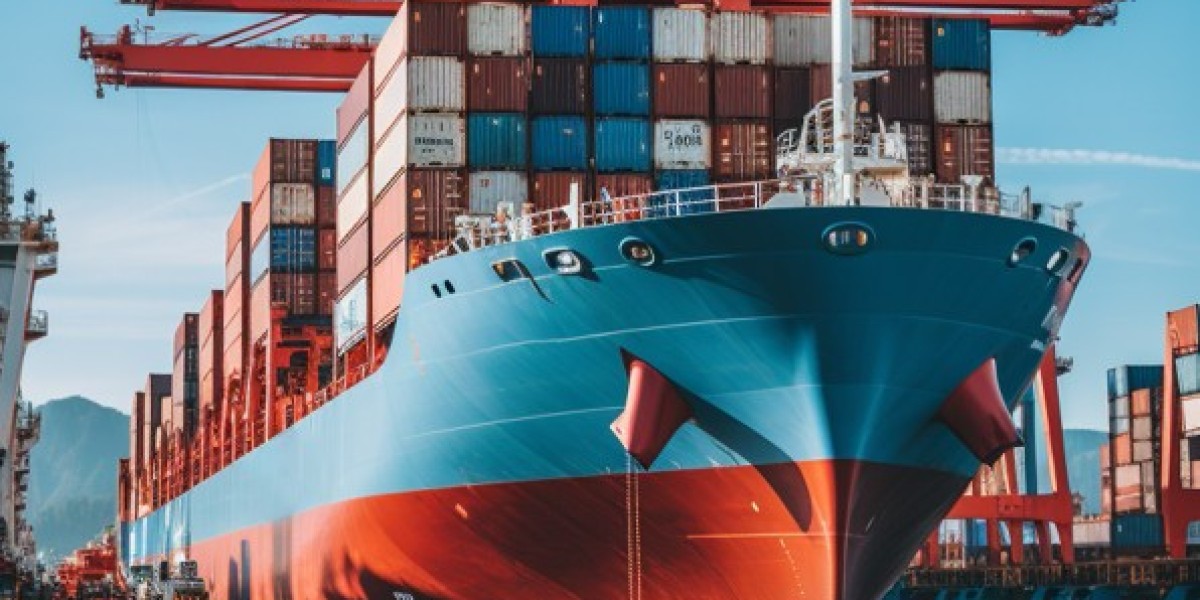Sea freight, or ocean freight, is one of the oldest and most important methods of transporting goods across long distances. As the backbone of global trade, it allows businesses to ship goods internationally, connecting economies and industries worldwide. In this blog, we’ll explore the basics of sea freight, how it works, its advantages and challenges, and why it remains a crucial mode of transportation for businesses.
What is Sea Freight?
Sea freight refers to the transportation of goods by sea using cargo ships. This method is often used for large volumes of goods and for long-distance shipments. Sea freight typically involves either full-container loads (FCL) or less-than-container loads (LCL), depending on the quantity and size of the cargo.
This form of transport is essential for global trade, as it accounts for the majority of all international cargo movement. It is commonly used for shipping raw materials, consumer goods, machinery, and bulk commodities such as oil, grain, and coal.
How Sea Freight Works
The process of shipping goods via sea freight involves several key stages, from packaging and booking to loading and delivery:
Booking and Documentation: The first step is to book space with a freight forwarder or shipping company. This involves choosing the correct vessel, route, and delivery time. The necessary documents, such as the bill of lading and customs paperwork, are prepared.
Cargo Packaging: Goods need to be packed securely to withstand the challenges of sea transport, including rough weather, temperature fluctuations, and the possibility of being handled multiple times.
Loading: The cargo is then loaded onto the vessel at a port of origin. This is typically done using cranes and specialized equipment for different types of goods.
Transporting: Once on board, the ship will travel across international waters to its destination port. The route and timing will depend on the shipping company’s schedule and the distance between the ports.
Unloading and Customs Clearance: Upon arrival, the cargo is unloaded, and customs clearance is completed. Goods are then transported to their final destination, which could involve further land transport, depending on the final delivery address.
Types of Sea Freight Shipping
Sea freight is divided into several categories based on cargo size and the way goods are shipped. Here are the most common types:
1. Full Container Load (FCL)
Full Container Load (FCL) refers to shipping goods that fill an entire container, either 20-foot or 40-foot in size. This is the most efficient method for shipping large quantities of goods, as the entire container is used solely for the cargo of one customer.
Advantages of FCL:
- Reduced risk of damage since the container is dedicated to one shipment.
- More cost-effective for large shipments.
- Faster transit times since the container doesn’t need to be shared with other shipments.
2. Less-than-Container Load (LCL)
Less-than-Container Load (LCL) is used when the cargo doesn’t fill an entire container. In this case, multiple shipments from different customers are consolidated into one container. LCL is ideal for smaller shipments that don’t justify the cost of an FCL.
Advantages of LCL:
- More affordable for small shipments.
- Suitable for businesses that ship smaller volumes or less frequent loads.
- Flexibility in terms of container size and shipping schedules.
3. Bulk Shipping
Bulk shipping is used for transporting large quantities of goods that are not packaged in containers, such as raw materials (coal, grain, or oil). Bulk vessels are designed specifically for handling bulk cargo, making them ideal for heavy or unboxed goods.
Advantages of Bulk Shipping:
- Cost-effective for shipping large volumes of unboxed goods.
- Direct transfer of large quantities from one port to another.
- Ideal for industries that require raw materials or large-scale deliveries.
4. Roll-on/Roll-off (RoRo)
Roll-on/Roll-off (RoRo) vessels are designed for cargo that can be driven on and off the ship, such as vehicles, heavy equipment, or machinery. The cargo is driven onto the vessel at the port and driven off at the destination.
Advantages of RoRo Shipping:
- Ideal for shipping vehicles and machinery.
- Reduces handling costs and risk of damage to goods.
- Faster loading and unloading processes.
Advantages of Sea Freight
Sea freight offers numerous benefits, making it the preferred option for international shipping, especially for large volumes of cargo.
1. Cost-Effective
Sea freight is one of the most economical modes of transport for large quantities of goods. Compared to air freight, sea freight tends to be much more affordable, especially for heavy and bulky items. While sea freight takes longer, the cost savings often outweigh the slower transit times for many businesses.
2. High Capacity
Sea vessels can carry an impressive amount of cargo, from containers to bulk goods. This high capacity makes sea freight ideal for large-scale shipments, whether it's raw materials or consumer products.
3. Global Reach
With ports in almost every country and continent, sea freight offers a global network, making it easy to reach international markets. Whether you’re exporting goods to Asia, Europe, or the Americas, sea freight connects businesses with global trading partners.
4. Environmentally Friendly
Sea freight is more energy-efficient compared to air freight, producing fewer carbon emissions per ton of cargo. It’s considered one of the more environmentally friendly modes of transportation for goods, especially when compared to air transport.
5. Safety and Reliability
Cargo ships are generally safe and secure, with stringent regulations ensuring that goods are transported without incidents. With advanced tracking systems, businesses can monitor their shipments in real time, ensuring they’re on schedule.
Challenges of Sea Freight
While sea freight is a popular choice, there are also several challenges that businesses must consider:
1. Longer Transit Times
Sea freight is much slower than air freight. Depending on the distance between ports, it can take weeks for goods to reach their destination, which may not be ideal for time-sensitive shipments.
2. Weather and Seasonal Conditions
Weather conditions such as storms, rough seas, or hurricanes can delay shipments. Businesses need to account for potential disruptions in transit times, especially for shipments passing through regions prone to extreme weather.
3. Port Congestion
Certain ports can experience congestion, especially during peak shipping seasons. This can lead to delays in loading and unloading, impacting overall supply chain timelines.
4. Customs and Documentation
Navigating customs procedures and preparing the necessary documentation can be complex, particularly when shipping internationally. Proper paperwork and compliance with regulations are crucial to avoid delays and extra costs.
Conclusion
Sea freight remains one of the most reliable and cost-effective ways to transport goods across international waters. Whether you’re shipping large volumes of consumer goods or bulk raw materials, sea freight provides businesses with the opportunity to connect with global markets while keeping costs low. While there are challenges such as longer transit times and potential weather disruptions, the advantages of sea freight often outweigh the drawbacks, making it an essential component of global trade.









